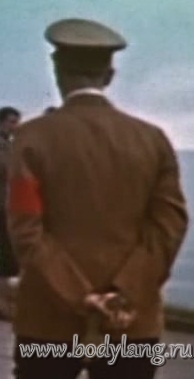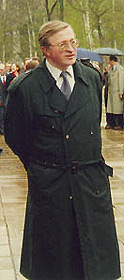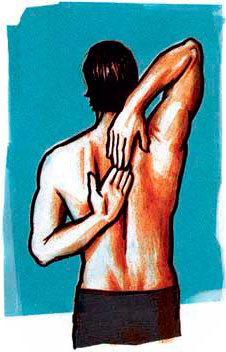Many people know how to hide their feelings and emotions. Words can not express much, not to say, to hide. But our hands usually give out everything the words are silent about. We may not even have time to even think, and our hands are already ahead of thought. has been known for a long time, and lately more and more attention has been paid to the study of this field of knowledge.
Our hands are a unique system. You can say a lot with one wave of your hand. But, there are such gestures that you need to be able to read in order to accurately determine what internal state of a person they express.
First of all, by the position and movement of the hands, the psychology of gestures accurately determines how confident a person is in himself, his words and actions. For example, if a person rubs his hands against each other, this can mean that he is very satisfied with himself, is completely sure of what he is doing, and hopes that his words and actions will lead to the desired result.
Similar in meaning can be considered a gesture of stroking something, pleasant to the touch, with the palm open. Such a gesture indicates that a person is in a pleasant mood, he is open to people and information, confident in himself.
If the hands rest on the hips, this means that the person feels his superiority and intentionally demonstrates it. This is a gesture of challenge that he throws to other people and the surrounding reality.
Gesture psychology knows a lot more hand positions that indicate emotional discomfort, insecurity and timidity.
Such gestures include movements aimed at hiding hands. For example, if a person puts his hands in his pockets - this is a sign that he is not sure of something, trying to hide his difficulty and, in some way, hide his emotional state. If a person hides his hands behind his back, gesture psychology insists that he is experiencing a difficult situation, some timidity, completely refuses decisive action.
Crossed on the chest gesture psychology regards hands as the desire of a person to isolate himself from what is happening outside his inner world, to hide and isolate himself. This is the so-called defensive reaction to the difficulties he is facing. A similar gesture - crossed arms support the upper body and rest on something. This situation means inner insecurity and a desire to find support. These same gestures can mean complete indifference or rejection by a person of what he is told. If your interlocutor crosses his arms, then he either does not listen to you at all, or does not agree with you on something.
Gesture Psychology is a separate group. movements associated with touching the face or head. Basically, such gestures also indicate a person’s uncertainty about something. For example, the direct index finger touches the lips, which means that the person is not sure what he is saying, he is trying to find the right words or find help. All gestures aimed at covering his face with his hands, gesture psychology regards as an attempt to hide his inner state, feelings and emotions. But with an erasing movement from his forehead, a person somehow drives away bad thoughts, distraction and feelings about something.
Such gestures include those that gesture psychology classifies as “ movement of lies". For example, in a conversation a person often tries to close his mouth with his hand. This is usually disguised as a cough or reverie. Thus, the subconscious as if trying to make him stop talking.
A gesture of light touch on the nose, often immediately reveals a liar. Characteristic for people who are telling a lie and a gesture of rubbing a century. Thus, a person, as it were, tries to stop looking into the interlocutor’s eyes.
Not all gestures can be interpreted unambiguously. Gesture psychology insists that a certain movement can be inherent in this particular person, and this does not mean that he is lying or nervous.
You can accurately determine the internal state only when you are well aware of a particular person and all his usual movements. The psychology of gestures of a complete stranger is available only to specialists, people who are professionally engaged in the study of the positions of the hands.
Tags:,
If you notice an error, select the necessary text and press Ctrl + Enter to inform the editor.An interesting point was noticed, most of the men - members of the British Royal Family - walk with their heads held high, their chins are raised and their hands are laid behind their backs. But not only members of the English royal family use this gesture, it is characteristic of the royal dynasties of many other countries. In everyday life, this gesture is used by principals, school principals, senior military officials and people in senior positions. That is, this gesture is a self-confident person with a sense of superiority over others. It allows a person with unconscious fearlessness to open his vulnerable areas of the body, such as the stomach, heart, and throat. Experiments show that if you take this pose in particularly stressful situations (for example, during a dentist's appointment), then you will feel less stressed, more confident and even domineering.
Police officers armed with firearms rarely lay their hands behind their backs, but often use an aggressive hand-to-hip gesture.
It seems that the weapon itself gives the person weight, so the need to confirm the importance of his person with an additional gesture will disappear. We conducted such a test. From the house to the store about 300 meters. There is only one lamppost throughout the journey. It turns out that in the dark, the lighting is very poor. The man had to go to the stall and back. At the same time, even knowing that he was being monitored, our test subject felt mildly uncomfortable. The next day we equipped him with a pneumatic gun. The result turned out to be quite interesting: firstly, as we expected, our subject was several times more confident in himself compared to last night, and secondly, he spent almost twice as much time on the way!
The gesture “hands in the lock behind the back” is different from the gesture “putting hands behind the back with the grip of the wrist” (Figure 2), which indicates that the person is upset and is trying to pull himself together. In this case, one hand grips the wrist as firmly as if it is trying to keep it from striking. Interestingly, the more angry a person is, the higher his hand moves on his back. The man in fig. 3, for example, exerts a greater effort for self-control than the person in Fig. 2, because the hand in fig. 3 captures the forearm, and not just the hand.

Picture 1.A gesture expressing confidence and excellence.

Fig. 2.Clasping hands behind the back with a grip on the wrist.
Fig. 3.Clasping hands behind the back with a grip on the elbow.
It was from this group of gestures that the expression "Get yourself together!" This gesture is often used by sales agents, when during a visit to a potential buyer they were not immediately received, but asked to wait at the reception. This is a bad technique used by an agent to hide his nervousness, and an observant buyer will probably feel it. If this gesture is replaced with “hands in the lock behind the back”, then a feeling of calm and self-confidence will appear.
In some cases, a person prefers to keep his hands behind his back. This is very significant: after crossing his arms in front of him, he seems to be protecting himself from other people, and here all protection is defiantly removed, all vulnerable areas of the body are open. That's right: such gestures are most often shown either by confident people, or people of power professions - prison guards, officials, police officers, directors, politicians.

Well, if you can look behind those people who hide their hands behind their backs, you will find that they do it in different ways. For example, if a person holds himself with one hand on the other above the wrist or even at the level of the elbow, then we can say that he is upset. And the higher the hand holds the other (as if it says: “keep yourself in your hands”), the more upset or angry a person is. If a person holds his wrist, then we can say: he is completely confident in himself and feels his superiority.

The last example is clearly demonstrated to us by the son of Alexander Rutsky, Alexander Alexandrovich Rutskoi. It is curious that this photograph was taken in court, where he was held by the accused in the case of the illegal export of foreign currency. As you can see, according to his gestures, he is not at all excited about what is happening and feels confident.
Further study of the illustration may provide much more useful information. Firstly, such poses are valuable in that they reflect the inner world of a person, and by the way he stands, some conclusions can be drawn regarding his character. For example, tilting the body down, when a person is leaning in front of someone, can mean indecision, timidity, or a servile attitude towards the interlocutor (you have already seen an example in the illustration of the meeting between Vladimir Putin and Nikolai Aksyonenko).
Its presence helps you hold your head high, walk with your shoulders proudly, and roll out your chest. But so that you can bend over the accidentally flown crown, the spine must also have good cushioning properties. Lack of mobility of the ridge can turn into back pain for you, caused, for example, by osteochondrosis.
Test
An assistant with a marker (or lipstick) marks the first lower lumbar vertebra (this is just above the buttocks, see fig.). The second point is ten centimeters higher. Now you, not paying attention to the ambiguity of the situation, lean forward - keep your knees straight! - as low as you can. How much has the distance between the points increased?
Rating
1.
Less than 3 cm: absolutely trouble. Urgently start doing yoga or Pilates. At the worst, include a couple of exercises in your daily diet that improve spinal flexibility. For example:
1) Lying on your back, grasp your knees with your hands and smoothly pull them several times to the chin.
2) Kneeling (toes extended, buttocks on heels), grasp the middle of the lower leg with your hands. Press your chin to your chest. Round your back and make several smooth attempts to raise your pelvis while holding yourself with your hands.
2. 3-4 cm: normal for a forty year old man. If you are younger, do the above exercises at least every other day.
3. 5-6 cm: excellent result. Keep it up!

SHOULDER GIRDLE
Leading a sedentary lifestyle - check the flexibility of the shoulder joints. They, in the unanimous opinion of surgeons, orthopedists and vertebrologists, are the first to lose “healthy geometry”. And in the words of ordinary mortals - flexibility. And this is an alarming bell announcing that your posture will soon deteriorate (first in the chest, then in the lumbar), your back will begin to hurt, and as a result, old age will come. Yes Yes! From a medical point of view, how old you are is measured not by years, but by sores!
Test
Try to clasp your hands behind your back in the lock as shown.
Rating
1.
Fingers do not touch: very bad. From today, make it a rule to perform daily exercises for stretching the shoulder joint.
1. Raise your right hand vertically and bend it at the elbow so that the hand is behind the head. With your left palm, carefully pull the right elbow several times towards the left shoulder. Change hands.
2. Extend your arms in front of you at chest level, take them to the sides and back to the stop, make a few springy swings.
3. Hug yourself alternately with one or the other hand, leading her under the arm of the opposite. Try to press your hand to the body as hard as possible.
2. You can catch on one or two phalanges: satisfactorily. Perform the above exercises 2-3 times a week. You can tighten your hands together in a complete lock: congratulations! In terms of joints, you are a healthy man of 30-35 years old. The same exercises will help to rejuvenate slightly.
3. The castle is easy and painless: girls are still far from gymnasts, but for an adult male the result is excellent. You can consider yourself younger than in fact, about five years.


